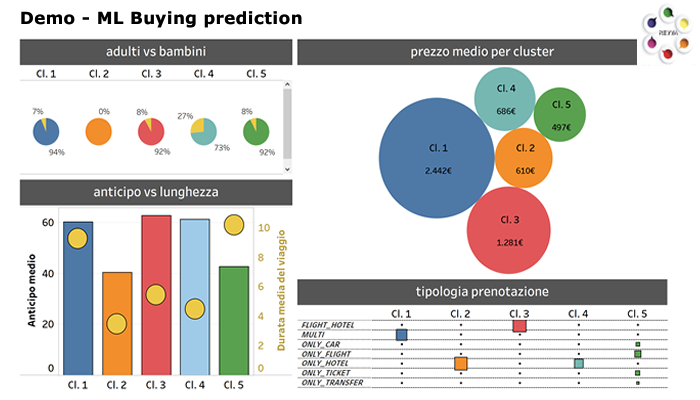True story: sick and tired of failed relationships, I decided I had enough of the random encounter method (so called destiny) and opted for a matching algorithm instead. You see, I’m a scientist at heart, much more rational than emotional. So I collected all the information I deemed necessary from online and offline sources, such as
- Age/Size/Weight
- Spending habits
- Nº of former husbands/boyfriends
- Nº of actual husbands/boyfriends
- Kids? Yes/No
- Literary preferences
- Sports practiced
And so on. I even added up zodiacal signs in the mix. Some might argue that’s not very scientific, but when you’re exploring data before modeling, you shouldn’t discard possible correlations just because.
I combined the data from past girlfriends as well as new prospects. Simultaneously, I weighted in my expectations and tried to establish my real chances of accomplishment. Hey, the product is what it is, and one must remain true to oneself!
By then, the target market (model) was taking shape, so it was time to A/B test a couple of campaigns with selected customer groups. Results were encouraging, as the expected segments came back again and again to consume the product. Next step was to zeroing on the few perfectly defined segments, launching an all-out laser-targeted marketing operation. Eureka! It was a success, and all I needed to do at that point was to hand-pick the most profitable customer and stick to it.
Here’s the result:

Well, the output might not be exactly what I had calculated in the blueprints, but as anybody involved in production can confirm, a flawless manufacturing process is an oximoron. Mother’s fault, of course.
Still, she’s my greatest achievement to date, a data-driven baby.
Who buys what, when, how
In my previous articles related to dynamic pricing >> and revenue management >> I mentioned several times this segmentation thing, taking for granted that my vast audience (Hi Hanna! Hi, Bob!) knew exactly what I was talking about. Indeed, they knew, but I found out they were still stuck with old school demographics customer classification. Sure, age and sex still are relevant when it comes to define buyer personas (both as customers and sex partners), but in this day and age, considering the large amount of data available, I’d rather go the airline and hotel way and categorize my customers by profitability.
If I wanted to provide a logical order to my articles, I should have written one about segmentation first and foremost, as it is the primordial material for proper revenue management. It doesn’t sound as sexy and hi-tech as dynamic pricing or RM though, but from segmentation everything else derives: know thy client!
If you want to ditch the old-school method, then, ask yourself (or rather, your data collection) the following questions:
- Who are my buyers?
- Which channel do they prefer? (how and where are they booking)
- What’s their buying behavior?
- What’s their favourite destination/hotel/airline/tour/services?
- How many times do they shop around before buying?
- And more to the point: How much did I get from them and how should all that influence my pricing strategy?
To answer all that, using age-old spreadsheets is feasible; to use an automated analytics system like REVVA is smart, because you’ll be able to insert in the equation your CRM as well as marketing automation tools, for starters.

Segment by data
It’s much like one of those online dating algorithms, after all. With data-driven segmentation, among other things you’ll be able to:
- Design and implement laser-targeted marketing campaigns: Got millennials suddenly looking for two particular destinations at specific dates? There must be some happening there, that you are not aware of. Wake up, find out what’s going on, and promote a tailor-made package through Pinterest, Instagram or whatever is the fancy name of the day for that segment.
- Predict demand: as per above, checking not only your booking systems but external data as well (like social media) you can anticipate the market. No kidding!
- Mind-boggling personalization, hence loyalty. Check here >> to see how Emirates did it on a rather large scale
- Apply the right price: remember dynamic pricing >>? Wealthier or eager segments are willing to pay more; adjust rates accordingly to maximize profits for high-demand periods (or services).
- Create demand: combine the last two items, and you’ll be even able to direct customers wherever you see fit for them. Again, no kidding: airlines and hotel chains have been doing it for ages, by analyzing their customers’ information.
Of course, all that can be achieved with a system like REVVA, and it’s less complicated than it may appear at first. Actually, we are going a step ahead here, using machine learning algorithms (artificial intelligence) to predict whatever each segment will buy next: type of trip, destination, with or without children… the works. Crazy, uh? The likes of Hotelbeds, Expedia and TUI have been at it for a while, I am sure they are already benefiting from the results of these data experiments.
Why shouldn’t you, then?

For data boffins: this is a set of cluster segmentation predictions by profitability, using an unsupervised machine learning model.
Go ahead: quit your tiresome relationships and let the truckload of data hidden in your organization help you find your ideal business partners, live happily ever after… maybe even conceive data driven babies!
Thanks for reading
Marcello Bresin
